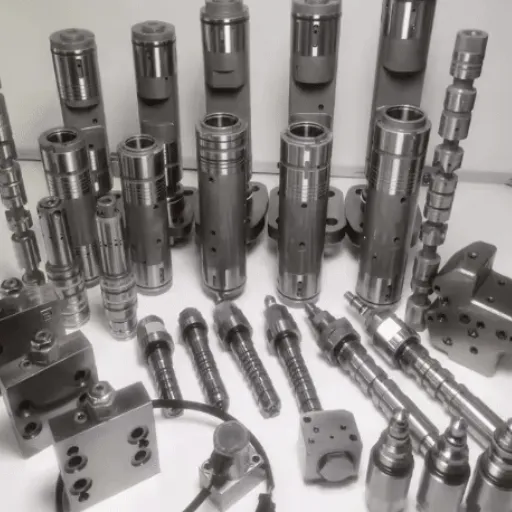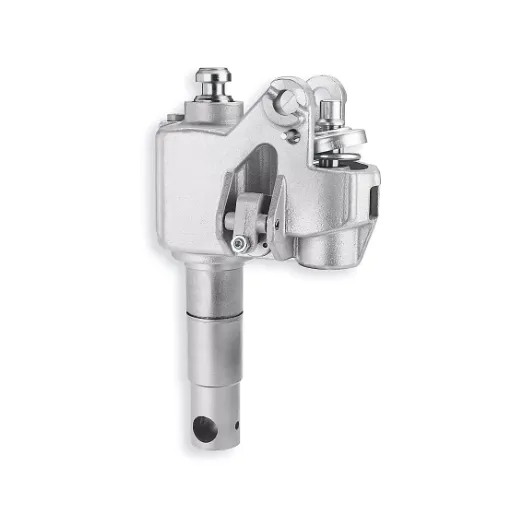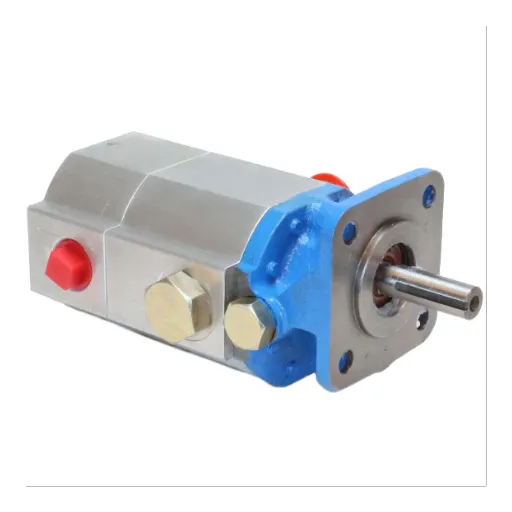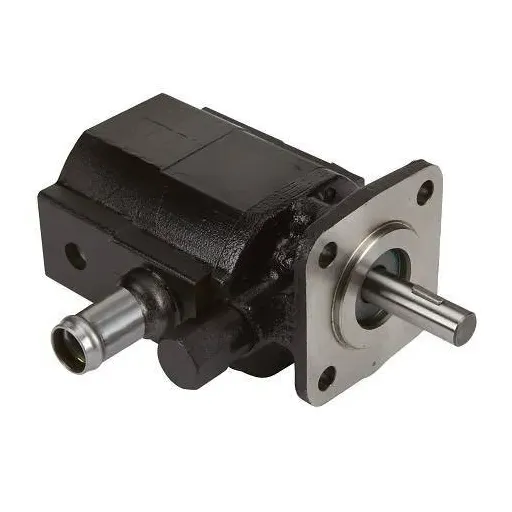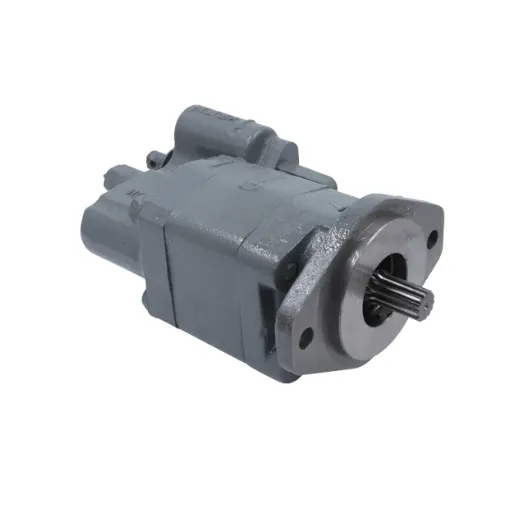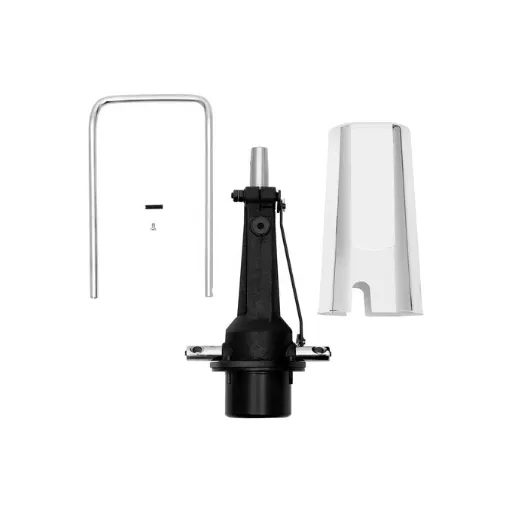Hydraulic pumps form the lifeblood for numerous industrial and automotive systems for precision and reliability in critical activities. However, the hydraulic pump adjustment screw, a very minor component, can be entirely determinant in output and efficiency of the system. So, while you are trying to resolve the problem of poor efficiency or making adjustments to finely tune your setup to specifications, it is good that you know about proper adjusting of this component. This article will guide you through a detailed, step-by-step procedure on how to do the adjustment of the hydraulic pump output for best performance and long life. By the end of this, you will be fully equipped with technical know-how to help you make sound adjustments that keep your hydraulic system working at an optimum level.
Introduction to Hydraulic Pumps
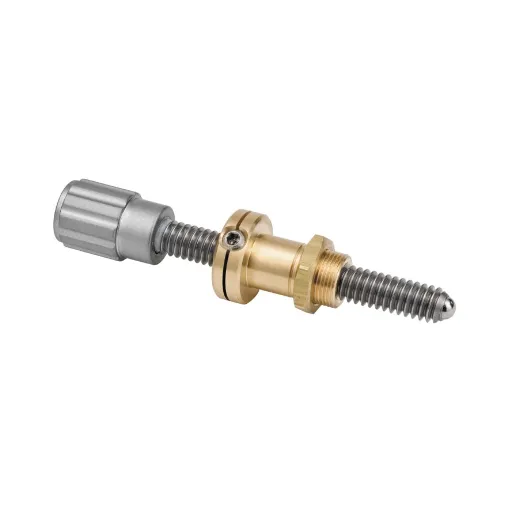
What is a Hydraulic Pump?
A hydraulic pump is a mechanical device that converts mechanical energy into hydraulic energy by moving fluid under pressure. It is an important part of hydraulic systems for it produces the force needed to operate any tool, machinery, or equipment. A hydraulic pump creates flow, while pressure is developed by the resistance to flow in the system.
There are several kinds of hydraulic pumps, depending on the application. Some of the most common types are gear, vane, and piston pumps. A gear pump is simple in construction and compact in design, making it ideal where moderate pressure is required. Vane pumps are characterized by smooth running and are usually found in industrial and mobile applications. Piston pumps are the most efficient type and can achieve very high pressure. These are used in industrial applications wherein precision and power are primary requisites.
Hydraulic pumps are considered of eminent use in a situation wherein construction, agriculture, manufacturing, and aerospace industries are glued together. They are used in hydraulic systems of equipment such as excavators, tractors, and control systems of airplanes. The assurance of in-service condition, adjustment, and maintenance of hydraulic pumps is essential to ensure that the specific system performs reliably, adequately, attaining optimization, thus leading to the optimum life of the equipment.
Importance of Hydraulic Pump Adjustment
A hydraulic pump adjustment is very important to achieve the best system performance and also to prevent the equipment from getting inefficient or going into total failure. Correct adjustments ensure that the hydraulic system works within the limits of the pressure and flow designated for it. This, in effect, preserves the integrity of the system and guarantees consistent operation. An incorrect adjustment might cause excessive heating, some leaks of fluid, or wear of the components, which eventually need to be repaired, resulting in high expenses or downtime.
Correct adjustments further help the whole hydraulic system’s energy efficiency. If the pumps are adjusted properly to the workload required, the pumps avoid unnecessary consumption of energy, which leads to cost savings in operation. This becomes a vital point in industries where heavy machinery is commonly in operation and whenever smaller inefficiencies have the potential to accumulate into millions of kWh in losses over time.
Besides, performing hydraulic pump adjustments regularly as per manufacture specifications ensures the highest degree of longevity of the equipment. Regular inspections and adjustments make it possible to detect potential mechanical problems in time and address them early enough to prevent catastrophic component failures. Under such conditions, hydraulic pump adjustment activities should not be treated simply as maintenance but rather as a safeguard for system reliability, operational efficiency, and investment in the equipment on the long term.
Overview of Hydraulic Pump Adjustment Screws
The hydraulic pump adjustment screws are critical components meant for fine adjustment of fluid systems for hydraulics. The adjustment screws control key attributes like pressure, flow, and system efficiency by enabling accurate control of the pump output. Adjustment screws, if suitably employed, will guarantee that the hydraulic system works consistently, and if not, may lead to inefficiencies that could cause cleaning, wear, or downtime for the system.
Pressure adjustment screws are normally active in fixing the maximum pressure in a system to suit the requirements of a given application. This avoids been overloaded and eventually been bent en route to the hydraulic components. Flow control screws instead allow the flow of the fluid to be adjusted by the operator to suit the set of actuators while rendering the operation safe. A modification made concerning the manufacturer’s directions is desired, as an improper setting may result in wrong functioning of the system or unsafe operating conditions.
For hydraulic pump adjustment screws to achieve optimum functioning, regular maintenance and calibration must be performed. Vibration, temperature variations, and mere prolonged system running time may cause deviating the screws from their optimum setting with time. Therefore, periodic verification and recalibration would enhance accuracy of the system as well as life-span of components and uninterrupted hydraulic operations. It is also recommended to keep a record of adjustments made for further reference and troubleshooting.
Understanding the Functionality
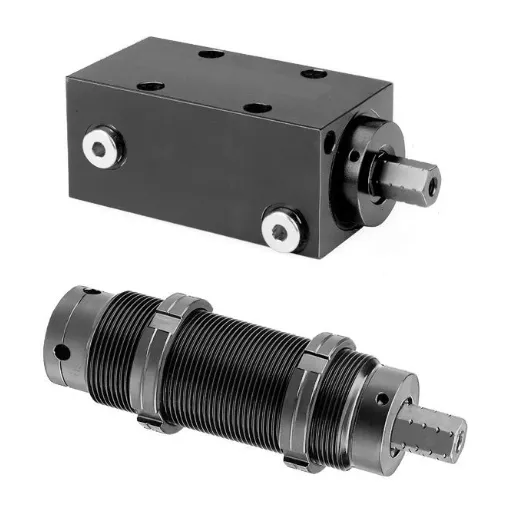
How Hydraulic Pump Adjustment Screws Work
Adjustment screws of hydraulic pumps are vital items, requiring fine calibration of operational settings to achieve peak performance levels under specific sundry working conditions. These screws generally control pressure; flow rate; responsiveness of any system, etc. An example would be a pressure adjustment screw that sets the tension on the internal spring mechanism associated with the relief valve to determine the valve’s threshold. This allows the entire hydraulic system to function within designed operating pressures so as to ensure that damage from excessive pressure is prevented, and on the contrary, the system is delivered enough power for its working.
On the contrary, the flow adjustment screw determines the volume of hydraulic fluid passing through the pump per unit time. This is especially important when exact controls must be implemented, such as in industrial machinery or mobile equipment. If made properly, these adjustments will help the operation running very well in their efficiency, use less electricity, and wear and tear less.
To keep performance levels in conformance with designated criteria, it is recommended to perform routine checks and calibrations, which include application of tools like pressure gauges and flow meters. If these settings are ever changed and not re-aligned, the result may be a fall in system efficiency, eventual component failure, and thus high operational costs. Other advanced hydraulic systems may prosper from electronically regulated adjustment systems, further enhancing precision and thereby allowing on-the-fly adjustments based on the demands of the application.
Role of Pressure Compensators in Hydraulic Systems
Being used to provide optimal hydraulic system performance, pressure compensators adjust pressure and stabilize it under different operational conditions; hence, the devices maintain flow when pressure changes as load changes. If integrated, pressure compensators become useful where, by controlling pressure, operational accuracy and efficiency are maintained. The key functions and advantages of pressure compensators are:
- Flow Regulation: Pressure compensators maintain a constant flow of fluid irrespective of pressure loads. This stabilizing effect maintains uniform performance in hydraulic circuits.
- Energy Conservation: Pressure compensators conserve energy during times of less demand and so enhance the overall system efficiency, thereby contributing to the reduction of operational costs and energy usage.
- Extended Component Lifespan: Pressure compensators maintain a constant pressure, preventing heavy loads from over-stressing system components and hence extending their service life and reducing maintenance requirements.
- Increased Operational Safety: Pressure compensators prevent sudden pressure spikes from reaching dangerous levels; hence, they enable safer operation, particularly in high pressure or heavy load environments.
- System control with high precision: Advanced pressure compensators allow dynamic adjustment of the transitional changes for different operational requirements to ensure the best performance.
For pressure compensators to provide the greatest benefits, they must be correctly fitted and periodically calibrated. Modern hydraulic circuits usually combine the use of programmable pressure compensators, based on a data-driven control strategy, thus enhancing flexibility and accuracy.
Impact of Adjustment on Hydraulic Pump Output Pressure
Variations in hydraulic pump output pressure drastically affect performance, efficiency, and longevity of the system. Five impacts of pressure adjustments:
- System Efficiency: If the output pressure is adjusted well, then energy wastage in overcoming unnecessary hydraulic resistance is avoided. Reports confirm that improving working pressure optimizes efficiency of the system by nearly 15%, with an equal reduction in energy consumption and operating cost.
- Component Wear and Tear: An abnormal pressure subjects hydraulic components such as seals, valves, and hoses to excessive stress, thereby expediting wear. Data suggest that about 30% shortfall in component life can result from systems improperly designed with higher stresses.
- System Response: Pump pressure adjustment is another factor affecting speed and intensity of actuator movements. For instance, a 10% reduction in pressure on application may slow actuator movement with load requirements, thereby limiting productivity of a system.
- Heat Generation: The increase in pressure is related to an increase in heat generation in the hydraulic fluid. The studies show that an increase in pressure of 1000 PSI will raise the fluid temperature by 8 degrees Fahrenheit, which will require more efficient cooling to maintain system efficiency.
- Safety Limits: When a system is pressurized beyond its design pressure, the risk of failure of the system will increase-rather hoses bursting, seals failing. If pressures are only 5% above that recommended by the manufacturer, the chances of catastrophic failure in componentry can be doubled.
Carefully observed and adjusted to balance changes in pressures exerted and maintain overall system integrity and functionality. Lots of need is recommended to employ advanced diagnostic tools that monitor pressures real-time to achieve optimized performance.
Common Issues with Hydraulic Pump Adjustment
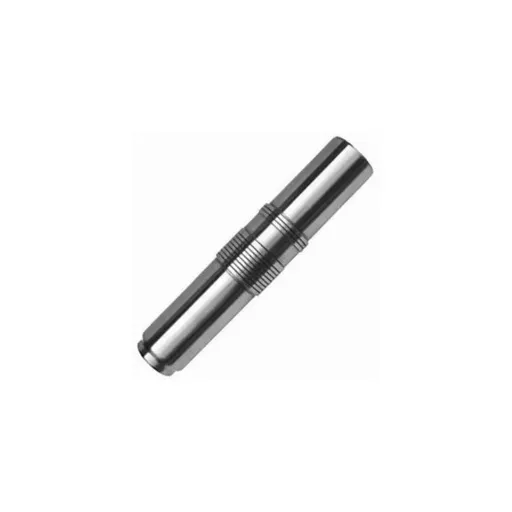
Identifying Symptoms of Improper Adjustment
Operational inefficiency and mechanical issues would express themselves as symptoms due to improper hydraulic pump adjustment. Noise may present as a symptom and would be an excessive noise. This is primarily when the pump force or flow rate is incorrect. Another problem is that the system will overheat due to high pressure that increases friction and heightens the rate of heat generation. The other symptom concerns low efficiency in the system, decreased speed of response from actuators, or inconsistent movement, all of which may be caused either by a pump output that is too large or too small for the system’s requirements.
Leakage represents another indication of the incorrect adjustment, because an increase in pressure will tend to destroy the seal or fitting, allowing the fluid to escape. A further indication that the unbalance exists in the system would be irregular or pulsating flow patterns between the pump configuration and the load requirements. These conditions then lead to premature wear-or even failure-of components, thereby constraining operations and bringing about a heavy cost of repairs.
The rectification of these problems necessitates a systematic approach with the application of diagnostics, such as meters of flow and infrared thermometers that indicate where anomalies exist in pressure, temperature, or flow. A suitable procedure for recording operations should be employed, as well as following the adjustment guidelines recommended by the manufacturer to assure the best chance of long-term system stability and performance. Preventive maintenance checks are also recommended to reduce the potential of improper adjustments and their associated results.
Common Troubleshooting Steps
A few lines must be ordered correctly with a methodical process while system troubleshooting. First, it is advisable to read the system logs and past performance data, pinpointing any potential behavior that could deviate from usual. Using some diagnostic tools like a multimeter or a thermal imaging camera may help to precisely isolate any fault here for example in an electric circuit or heat dissipation.
In all pressure or hydraulic systems, all valves, seals, and connections must be intact and working within manufacturer’s specifications. Check signs of wear or leakage, with a direct effect on system efficiency. For electronic or software-run systems, check that firmware and software were properly updated, because an outdated update could cause incompatibilities or bottlenecks in system performance.
Also, compare against manufacturer instructions or further technical manuals to ensure that components are configured or calibrated correctly so as to be consistent with design intent and operational standards. It is important to document the entire troubleshooting process for the purpose of observing trends in the occurrence of issues that may indicate deeper systemic inefficiencies or failures.
Step-by-Step Adjustment Procedures
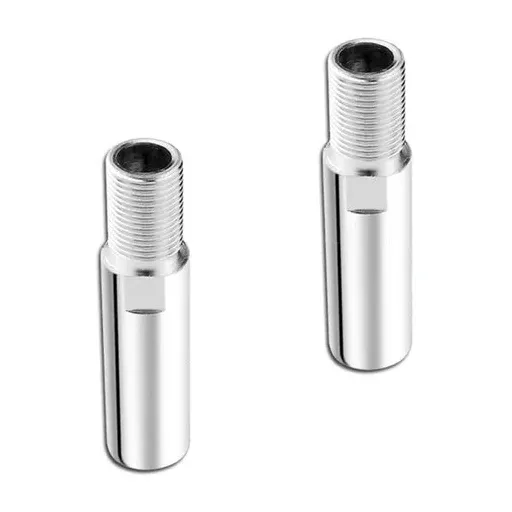
Preparing for Adjustment: Tools and Safety Precautions
Before any adjustment is made, all personal and job-related hazards should be identified; a scan for required tools and equipment should be made after assessing health and safety factors. Tools needed should be an accurate measuring instrument, a calibrator, a torque wrench, and plenty of alignment tools, all pertaining to the system to be adjusted. Always crosscheck these tools against the guidelines specified by the manufacturer for compatibility and specification recommendations.
⚠️ Safety First
From the safety aspect, all personnel must wear personal protective equipment such as goggles, gloves, and safety footwear while subject to exposure to such hazards. There should be proper illumination and no obstructions in the way that could hamper work while maintaining such an environment as a safe working place. Also, lockout/tag-out procedures have to be followed for isolating any source of energy that could otherwise cause a potential accident when machinery is activated during the adjustment work.
The current set of safety standards allows technicians to have their tools advanced and amplified in all possible ways. However, by interpreting and assessing every safety criterion with strictness, technicians can apply those adjustments with more precision and efficiency. These methods ought to fulfill industry standards and workplace safety regulations simultaneously.
How to Adjust a Hydraulic Pump Output
To adjust output for a hydraulic pump I first ensure that the system is fully depressurized and isolated so as to avoid any accidental fluid release or others hazardous movements. Considering safety above all, I also check to see if the LOTO procedure has been followed before making any adjustments. Also, as necessary, I will consult the manual of the equipment to look up on specifications and recommended adjustment procedures to ensure that all are done in accordance with the manufacturer’s guidelines.
Next, I locate the adjustment mechanism. This normally is an adjustment screw or valve that sets the flow or pressure of the pump. Tools at hand, I would make small changes while checking the system’s output on a pressure gauge or flow meter. This step granted that I do not go beyond the system parameters, risking damage to one of the components or untenably compromising on system operations. By employing a systematic approach, deep calibration for best efficiency is attained.
Re-pressurize the system, conduct tests under normal operating conditions, and check the adjusted output against specifications. Further adjustments are needed if maximum performance has not been achieved. Once accuracy of adjustments is confirmed and the system is flowing smoothly, the components can be finalized, changes documented, and the equipment prepared for safe and efficient operation.
Testing and Verifying Pump Output Pressure
Initially, I check the pressure value using a pressure gauge that must be calibrated for the test range. This gauge is attached to the test port or an access port on the pipeline to get the least amount of inaccuracies due to pressure measurement. The pump is turned on during the test and is allowed to achieve normal operating conditions concerning temperature, flow rate, and pressure stability.
Any possible deviations ought to be tested against the output pressure as measured vis-a-vis the manufacturer’s specification. For instance, if the measured pressure is higher or lower than the recommended range, it may indicate worn-out critical components, wrong settings, or blockages in the system. Using such precise diagnostic tools, I would carry out tests to verify any irregularities noted during this measurement and correlate the results with the system log or historical servicing data for increased accuracy.
One more test under working loads is applied to the pump system once the new adjustments are applied to ensure consistent performance. All test results are recorded proscribing an opportunity for trend analysis and planning of preventative maintenance. This way, the test results are fully profiled concerning output pressure, specifications, and reliability, so there will be long-term system efficiency.
Maintenance Tips for Longevity
Regular Inspection and Maintenance Practices
To enhance longevity and keep in good shape, inspection routines for pump systems must go on regularly. Start with visual scrutiny for any sign of wear, corrosion, or other leaks penetrating through seals, casings, or connected pipelines; availability of abnormal noise or vibration during operation may indicate misalignments or internal damage to components. Bearing and parts lubrication must go on according to schedule to reduce friction and load, thereby avoiding overheating that may considerably reduce efficiency and service life.
During the operations, monitor fluid level, pressure gauges, and flow rates to ascertain conformity with system design parameters. Any insignia mark higher or lower than the standard could be signaling clogged filters, cavitation, or impeller wear. Go ahead to replace any worn-out parts, such as worn seals or gaskets, so as to avoid extra damage.
Lastly, keep detailed logs of inspections, repairs, and part replacements for later reference in case such details should be needed concerning recurrences of specific issues or for optimizing maintenance scheduling. Following this approach systematically increases the chance for the development of solutions to full predictive maintenance technology with real-time data from sensors and automated alerting.
Understanding the Role of Pressure Relief Valves
Pressure relief valves (PRVs) are perhaps the most crucial components in industrial and mechanical systems, manufactured to save equipment, persons, and processes from high pressure that may result in catastrophic failure. Their sole function is to relieve pressure in a system either while in operation or during testing in which cases pressure can exceed the safety level set as a working limit. As such, the functioning device must have a safe working environment to meet prescribed safety standards. These pressure relief valves find their use in the oil, gas, chemical, and power-generating industries because of their reliability and efficacy.
Functions and Importance of Pressure Relief Valves
- Avoidance of Overpressure Conditions: If the pressure rises beyond operational limits, the PRVs automatically release it.
- Ensuring Equipment Safety: They release pressure upon buildup by preventing the possible damage of vessels, pipelines, and mechanical equipment.
- Operational Safety: Overpressure can result in dangerous situations for workers and infrastructure. PRVs, therefore, minimize these dangers.
- Regulatory Compliance: PRVs are required to meet various industry standards such as ASME and API.
- Longevity of Equipment: The proper control of pressure avoids wear and tear on equipment, assuring a high degree of reliability and longer use.
Types of Pressure Relief Valves
| Valve Type | Description |
|---|---|
| Spring-Loaded Type Pressure Relief Valves | In these pressure relief valves exist springs used for pressure release. A spring opens the valve at some set pressure so that it can serve with accuracy and efficiency in a wide range of applications. |
| Pilot-Operated Type Pressure Relief Valves | These are controlled and modulated by a pilot valve for the main valve and are used where systems require high-pressure settings and accurate control. |
| Thermal Relief Valves | Mainly set to pour out pressure owing to temperature-mandated expansions in liquid systems, the valves find their application in all those areas where thermal variation is indeed a matter of concern. |
| Safety Relief Valves | Accustomed to both pressure and safety valves, they manage to release overpressure in liquids and gases, thus furnishing versatility in systems that need handling of both phases. |
| Balanced Bellows Relief Valves | Equipped with bellows, these valves serve to isolate the valve internals from backpressure. When the backpressure is a variable in the system, it might otherwise influence the performance of the valve. |
Further technological advancements have resulted in the evolution of pressure relief valves with digital monitoring systems for real-time data and diagnostics in an attempt to proactively support maintenance on the valve and improve the safety and efficiency of the entire system.
Best Practices for Hydraulic Pump Care
Proper maintenance of hydraulic pumps is necessary for ensuring optimal performance, longevity, and system safety. Presented here are detailed best practices based on industry standards and recent developments in hydraulic technology:
Regular Fluid Analysis and Maintenance
Hydraulic fluid quality influences the efficiency and lifespan of pumps. Conduct regular oil sampling and analysis to determine whether the system fluids contain any contaminants, have degraded, or contain water. Change the fluids immediately if any conditions are detected and do so according to the manufacturer’s recommendations, ensuring proper compatibility with the system components.
Filter Inspection and Replacement
When hydraulic systems are to perform efficiently, the fluid must be clean. Check filters of the system on a regular basis and replace them when it is time to do so. Modern systems may be equipped with an advanced monitoring system that uses sensors to monitor filter performance and alert operators of any required replacements.
Maintain Proper Operating Temperature
Hydraulic pumps are susceptible to temperature variations, which result in thermal expansion or viscosity changes. For temperature control, the need for full air conditioning or a heat exchanger is imperative so that temperature variations are kept well within the specified acceptable tolerance range given by the manufacturer.
Integrity in Seal and Leakage Check
Watching leakage and worn seals makes up a really great maintenance task and ensures that troubleshooting can be carried out so efficiently by saving time and can offer a secured working procedure on-site for research. Always carry out judgments to have a specific type of seal that can resist the chemical/thermal stresses present in your specific hydraulic fluid.
Pressure Monitoring in the System
System pressure has to be regulated to keep the pump off overload or beyond design limits. To avoid damage on account of pressure spikes or inconsistencies, continuous pressure monitoring through onboard sensors becomes very necessary.
Lubrication Management
While lubrication is chiefly done to reduce wear and tear of pump components, the best practice is to use a manufacturer-recommended lubricant for lubrication. Also, make sure that those pathways for lubrication are not blocked.
Adopt Predictive Maintenance
Never miss adopting predictive maintenance by using modern sensor technology and software. Real-time monitoring of vibration, oil quality, or temperature will help in detecting symptoms of a problem, which would otherwise cause a downtime or failure in the system.
Follow Manufacturer Instructions
Observe the operation and maintenance instructions offered by the pump manufacturer. Include the use of recommended spare parts, service intervals, and knowledge of the limitations of the pump.
Properly combining the good old-fashioned maintenance strategies with cutting-edge diagnostic techniques will go a long way to streamlining hydraulic pump care, reducing equipment failures, and improving system efficiency and reliability.
Frequently Asked Questions (FAQ)
Q: What will you do with the hydraulic pump adjustment screw?
A: The hydraulic pump adjustment screw will be useful for fine adjustment or setting of pressure output by the hydraulic pump. By turning the adjustment screw, you will either increase or decrease hydraulic pressure applied to your hydraulic equipment, as the operational needs demand.
Q: How do I adjust the hydraulic pump pressure?
A: First, find the adjustment screw located on the side of the hydraulic pump. Then, with the help of a screwdriver, turn the adjustment screw clockwise to raise pressure or counterclockwise to lower it. Once done, keep watching the pressure readings to make sure that it stays on the desired value.
Q: What tools will I require for adjusting the hydraulic pump?
A: You would usually require a screwdriver to turn the adjustment screw. Also, it would be good if you had a pressure gauge on hand so you can actually monitor the hydraulic pressure while making the adjustments and ensure it stays within an appropriate pressure range.
Q: Can I adjust the hydraulic pump if it is under load?
A: It is not advisable to adjust the set pressure on a hydraulic pump while it is under load. Pressure fluctuations will occur during the adjustment, risking damages to the pump or the connected cylinders. Set closing pressure on the pump only when the system is in normal working condition.
Q: What happens if the pressure of the hydraulic pump is set too low?
A: If the pressure of the hydraulic pump is set too low, it will mean insufficient hydraulic flow and therefore inadequate performance of the associated hydraulic equipment. This would cause the equipment to malfunction or simply operate poorly under load when simultaneously exerted.
Q: How do I increase the pressure of the hydraulic pump?
A: Increase the hydraulic pump pressure by turning the adjustment screw clockwise until you have obtained the desired pressure needed for your application.
Q: What do I do if power pressure maintenance is not attained at the pressure control valve?
A: If pressure is not being adequately maintained by the pressure control valve, the hydraulic pump adjustment screw may require adjustment. Also, check for any leaks or other malfunctions in the hydraulic system that would impair pressure stability.
Q: Please tell me how to maintain proper flow and pressure in a hydraulic system.
A: To maintain proper flow and pressure in a hydraulic system, one should always watch pressure with gauges and regulate the hydraulic pump adjustment screw as situations demand. Also, one should pay good attention to upkeep of the hydraulic equipment. In that way, adjustments and fixation of the setting against any fluctuations of pressure can be secured.
Q: What are hazards that may arise from improper adjustment of the hydraulic pump?
A: If the hydraulic pump is not adjusted properly, issues such as inefficient system operation, greatly accelerated wear on components, and failure of hydraulic cylinders and motors may arise. It is absolutely essential to learn how to adjust the hydraulic pump correctly to avoid such risks and to get the best performance from the equipment.
Q: Would a new pump require a different way of adjusting it?
A: Yes, a new pump might have to be adjusted differently from those older in design. The manufacturer’s instructions should always be followed for the exact method from their side on how to adjust the hydraulic pump adjustment screw for the particular model of pump to make sure that it is adjusted for accurate pressure and attached to your system properly.
Final Thoughts
Understanding and properly adjusting hydraulic pump adjustment screws is essential for maintaining optimal system performance, efficiency, and longevity. By following the guidelines and best practices outlined in this comprehensive guide, you can ensure your hydraulic systems operate safely and effectively for years to come. Regular maintenance, proper adjustment techniques, and attention to safety protocols will help you maximize the return on your equipment investment while minimizing downtime and repair costs.



